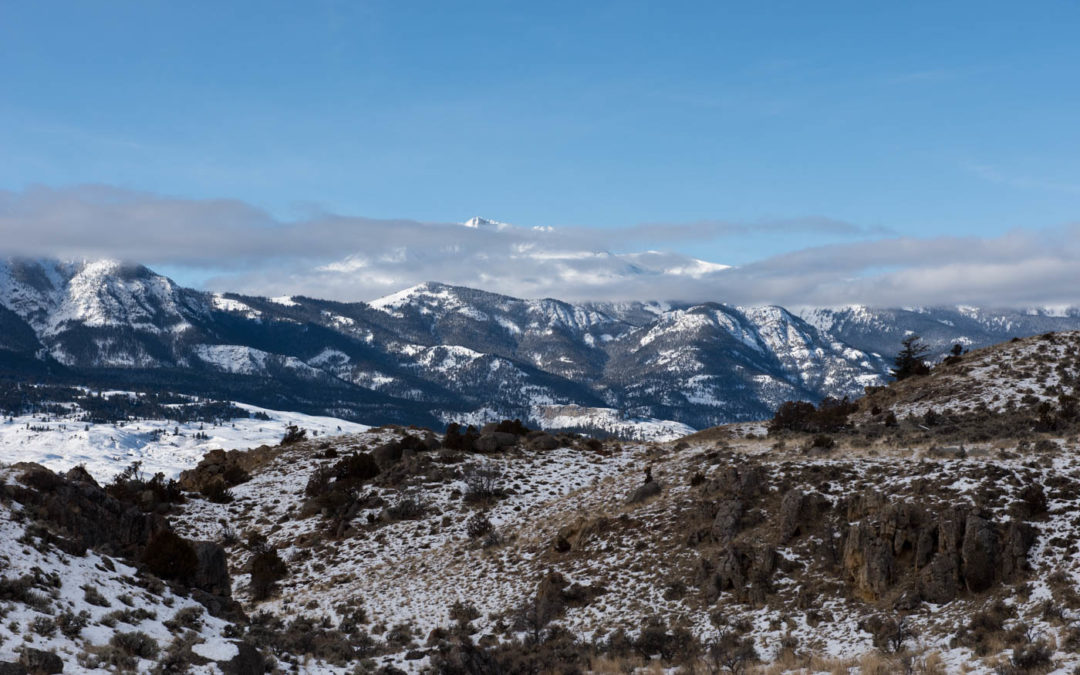Having the ability to stay at the Lamar Buffalo Ranch for the first 10 days of this course was an absolute treat for all of us. The students and teaching team enjoyed the time spent in the park, but today we were off to our new home at the Overlook Campus. The Overlook, located just north of the park near Gardiner, MT, offers sweeping views of the Mammoth Hot Springs area, and extraordinary mountain views. The four buildings are surrounded by 80 acres of land owned by Yellowstone Forever where a plethora of wildlife roam.
The students spent the morning exploring Gardiner and grabbed lunch at the Two-Bit Saloon. Once everyone was moved in, we reconvened and learned about the work Drew Zackary is doing with wolves in Nepal.
After a quick break, we moved right into a discussion on John Shivik’s Predator Paradox book, a required reading for this course. In his book, Shivik shares stories of those who are finding new ways for humans and mammalian predators to coexist. This would be a great segue into our next day when we would be visiting with a local rancher, Martin Davis, to hear about his views and perceptions as a rancher living alongside predators like wolves, mountain lions, and grizzlies.
For many of the students, this book demonstrates that a major cultural shift and reframing on all sides of the conversation is required. Even those of us with best intentions have to reframe our thinking. Some thoughtful points were raised:
– Right away we asked the question, who has the right? Who are we as a species and how do we have the right to determine the fate for these animals? One man feels he has the right to trap/kill wolves in the way he sees fit. We may feel we have the right to protest that or keep animals alive.
– Shivik talked in defense of the ranchers. It’s their lifestyle, their livelihood. We also have to realize these are the people and businesses that supply the meat that people constantly consume.
– Why do we only tend to hear about the bad things a coyote does? And how does that shape a person’s perceptions?
– There’s a disconnect between various perspectives. Science doesn’t connect with ranchers, and it’s hard to get people to work together and see other sides. How can we bridge this?
– The theme of “fear” in the book was not clearly expressed. “It’s the whispered language between predator and prey.”
– Landscapes of fear, fear ecology: How is this used here in YNP?
– Behavioral changes in elk. Fear of predation is a huge effect. Behaving as if you might get attacked.
– Fear of losing control. My children might get eaten.
– Aldo Leopold’s “Thinking Like a Mountain” – mountain’s fear of elk eating up its mountainside.
– Fear is good and bad. Without fear there is no progress. We risk and lose more. We need it, and it can be a motivating factor.
– Different people connect with nature differently – some hunt, some ranch, some hike, some take photographs. All are different perspectives and actions.
– Why not be as scared and concerned about grizzlies? Perhaps because there aren’t as many grizzlies as wolves, and grizzlies were not removed from the landscape and then reintroduced like wolves were.
– Glorification of dogs, wolves are more similar to people, but why the conflict? Do we fear wolves more than other animals because they are more like us than other species?
Later in the evening, we made a special trip over to Jim Halfpenny’s Track Education Center just down the road from the Overlook Campus. Dr. Halfpenny’s museum was loaded with wildlife tracks and skeletons captured by his team, and sent in from other locations throughout the world. The types of tracks he had available ranged from otters, to ungulates, to large predators like bears and mountain lions, and most notably, Bigfoot. Is he convinced Bigfoot is real? No. Not yet, at least.
After an informative presentation on his work with forensic tracking, the students were free to explore the museum for the rest of the evening.












